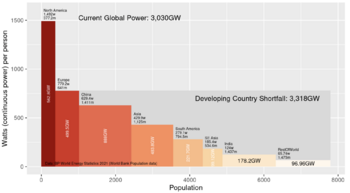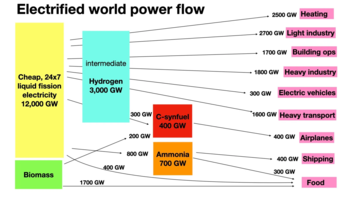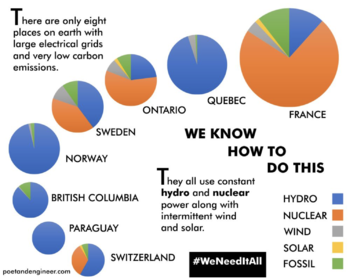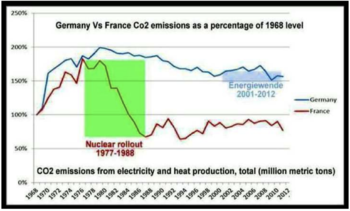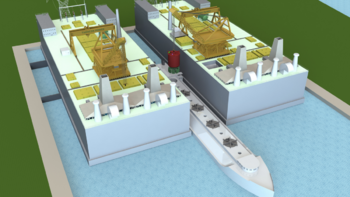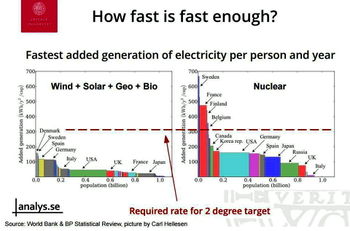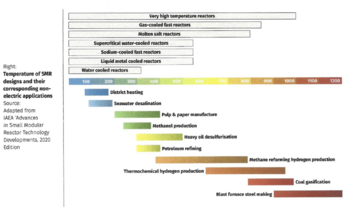Energy policy and global warming: Difference between revisions
m (re-arrange figures) |
|||
| Line 13: | Line 13: | ||
This article is a brief review of the options for decarbonizing our world. | This article is a brief review of the options for decarbonizing our world. | ||
== The Magnitude of the Problem == | == The Magnitude of the Problem == | ||
Over millions of years, the Earth has developed an equilibrium between the carbon in the atmosphere and in the rocks and organic material on or near the surface. That equilibrium is now being radically altered by our consumption of fossil fuels. What seems to us like a slow change over decades, is that vertical spike in Fig.1. That spike is continuing to shoot upwards in spite of years of talk and negotiations among the world's nations, and failure to reach agreed on targets. The CO2 we put in the atmosphere now will last for centuries.<ref>[https://www.nature.com/articles/climate.2008.122 Carbon is Forever, M.Inman, Nature 2008.]</ref> To minimize the risk of a catastrophic change in climate, scientists are telling us we need to limit global warming to 2 degrees C. That will require ten times more CO2 reduction than even current agreements. Clearly we need a new strategy. | |||
Fig.2 shows our current total worldwide consumption of electric power, with each bar a different region on our planet. The height of the bar is the average per person, and the width is the population of each region, so the area of the bar is a good visualization of total consumption for a region. The developing countries are expected to increase their consumption, perhaps to the level of Europe, or half the level of North America. That will put the total worldwide average power at 6300 GW, or more than twice our current level. | Fig.2 shows our current total worldwide consumption of electric power, with each bar a different region on our planet. The height of the bar is the average per person, and the width is the population of each region, so the area of the bar is a good visualization of total consumption for a region. The developing countries are expected to increase their consumption, perhaps to the level of Europe, or half the level of North America. That will put the total worldwide average power at 6300 GW, or more than twice our current level. | ||
Electric power is only a quarter of our CO2 problem. If we include transportation and industry, our burning of fossil fuels is putting | Electric power is only a quarter of our CO2 problem. If we include transportation and industry, our burning of fossil fuels is putting | ||
== A Plan for the Future == | == A Plan for the Future == | ||
Fig. 3, 4 | Fig. 3, 4 | ||
Revision as of 15:26, 2 June 2022
Climate scientists tell us that our consumption of fossil fuels is raising atmospheric CO2 levels, causing rapid global warming, and risking catastrophic climate change. Most people now accept these conclusions, but there is still debate over whether the replacement for fossil fuels should include nuclear power. Many believe that nuclear power cannot be made safe and clean.[1] Others believe that an energy policy that does not include nuclear is unrealistic. This article is a brief review of the options for decarbonizing our world.
The Magnitude of the Problem
Over millions of years, the Earth has developed an equilibrium between the carbon in the atmosphere and in the rocks and organic material on or near the surface. That equilibrium is now being radically altered by our consumption of fossil fuels. What seems to us like a slow change over decades, is that vertical spike in Fig.1. That spike is continuing to shoot upwards in spite of years of talk and negotiations among the world's nations, and failure to reach agreed on targets. The CO2 we put in the atmosphere now will last for centuries.[2] To minimize the risk of a catastrophic change in climate, scientists are telling us we need to limit global warming to 2 degrees C. That will require ten times more CO2 reduction than even current agreements. Clearly we need a new strategy.
Fig.2 shows our current total worldwide consumption of electric power, with each bar a different region on our planet. The height of the bar is the average per person, and the width is the population of each region, so the area of the bar is a good visualization of total consumption for a region. The developing countries are expected to increase their consumption, perhaps to the level of Europe, or half the level of North America. That will put the total worldwide average power at 6300 GW, or more than twice our current level.
Electric power is only a quarter of our CO2 problem. If we include transportation and industry, our burning of fossil fuels is putting
A Plan for the Future
Fig. 3, 4 Decarbonizing transportation and process heat for industry will require new technology, perhaps carbon-free hydrogen. Fig.3 is one vision for the future. Abundant clean power could be used to generate a mix of electric power and hydrogen appropriate for each sector of the economy.
The Problems with Wind and Solar Alone
- need for 100% fossil fuel backup - Fig.5
- use of land and mineral resources - Fig.6, 7
The Need for Immediate Action
Fig.8,9
Further Reading
Electrifying Our World Robert Hargraves' excellent overview of energy, the growth human civilization, and possible solutions to the current climate crisis.
Our World in Data has a section on Energy and Environment with nice interactive graphics.
World Nuclear Information Library a well-organized authoritative collection of information on nuclear power.
Notes and References
- ↑ See Nuclear power reconsidered for discussion of these concerns.
- ↑ Carbon is Forever, M.Inman, Nature 2008.

